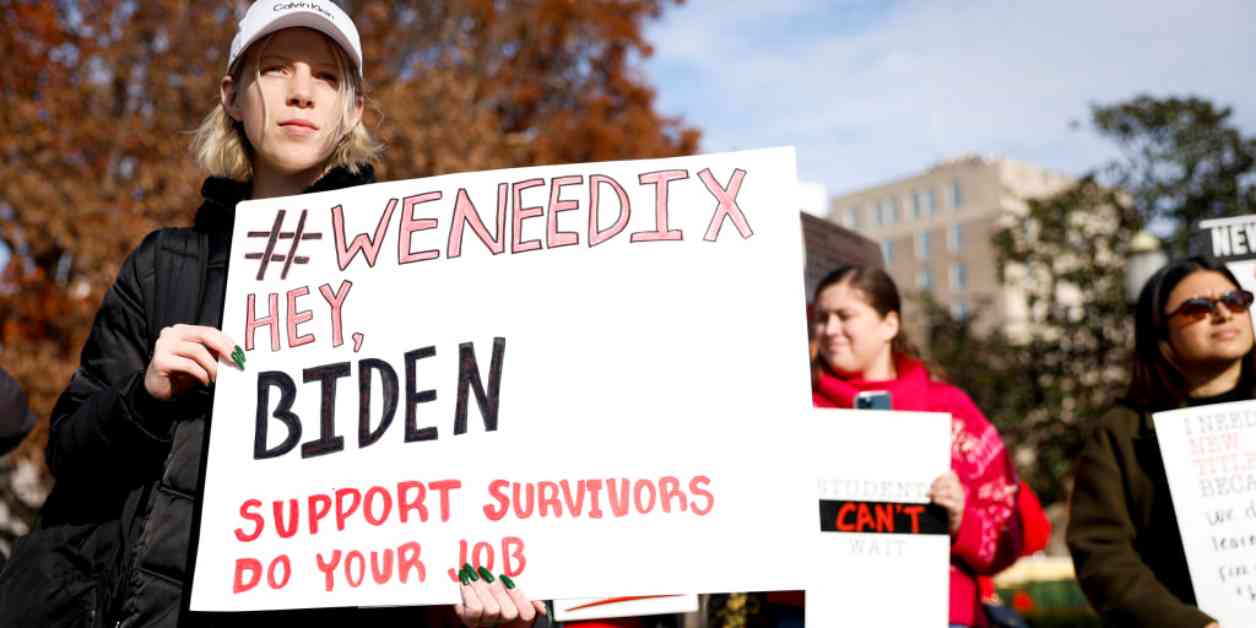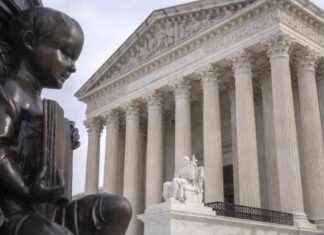Supreme Court Temporarily Rejects Biden Administration’s Request to Enforce Title IX Regulations
In a significant legal development, the Supreme Court issued a ruling on Friday that temporarily bars the Biden administration from enforcing certain provisions of a major regulation on sex discrimination in education. This regulation has been at the center of a contentious legal battle over its protections for transgender students. The court’s decision came in response to a request from the administration to allow less controversial parts of the regulation to go into effect in states where it has been challenged, while the more contentious issues are being litigated in lower courts.
The Supreme Court’s opinion stated, “On this limited record and in its emergency applications, the Government has not provided this Court a sufficient basis to disturb the lower courts’ interim conclusions that the three provisions found likely to be unlawful are intertwined with and affect other provisions of the rule.” This means that the court found the issues surrounding the regulation to be interconnected, making it difficult to separate the disputed parts from the rest of the rule.
Contentious Issues Surrounding Title IX Protections for Transgender Students
One of the key points of contention in the regulation is the inclusion of protections for transgender students, particularly regarding their access to facilities such as restrooms and the use of preferred pronouns. The court’s ruling keeps these provisions on hold in the affected states, where they have been challenged. However, it does not impact states that did not challenge the regulation, as they will continue to be covered by its provisions.
Liberal Justices Sonia Sotomayor, Elena Kagan, and Ketanji Brown Jackson, along with conservative Justice Neil Gorsuch, dissented in part from the majority’s order. Justice Sotomayor expressed concern about the broader implications of blocking the government from enforcing regulations that were not directly challenged by the plaintiffs. She argued that the injunctions in place may burden the government more than necessary, given that some of the provisions are unrelated to the issues raised in the lawsuits.
Implications of the Supreme Court’s Decision on Title IX Regulations
The regulation in question, finalized by the Education Department in April, applies to educational entities that receive federal funding. In addition to protections for transgender students, it includes measures related to pregnant and postpartum students and employees, such as access to lactation spaces and restrooms. While some parts of the regulation remain unchallenged, a total of 26 states contested its provisions, with 22 obtaining lower court rulings that prevent its full enforcement.
The Supreme Court’s action specifically addressed challenges in two separate cases, one in Kentucky and the other in Louisiana, where federal judges had blocked the entire regulation in response to the lawsuits. The administration had turned to the Supreme Court after appeals courts declined to narrow the scope of the injunctions issued by the lower courts. Solicitor General Elizabeth Prelogar argued that the lower court judges overstepped their authority by blocking provisions that were not the focus of the challengers’ lawsuits.
Legal Arguments and Counterarguments Surrounding Title IX Protections
Prelogar contended that the Education Department’s recognition of gender identity as protected under Title IX should stand, citing a Supreme Court ruling from 2020 that established gender identity as a protected category under employment discrimination laws. She maintained that the administration’s interpretation of Title IX was a straightforward application of existing legal precedent. However, the challengers argued that the entire rule should be blocked due to what they perceived as a broad redefinition of sex discrimination that permeated the regulation.
The legal battle over the Title IX regulation has implications beyond just the specific provisions related to transgender students. It raises broader questions about the scope of sex discrimination protections in education and how they should be interpreted and enforced. The competing arguments presented in court reflect differing views on the appropriate balance between protecting the rights of transgender individuals and maintaining traditional understandings of sex discrimination.
State Challenges to Title IX Regulations and the Role of the Supreme Court
The challenges to the Title IX regulation were brought by a coalition of states, with Kentucky and Louisiana leading the lawsuits that prompted the Supreme Court’s intervention. These states, along with others, argued that the regulation’s redefinition of sex discrimination was overly broad and infringed on their authority to set education policies at the state level. The Supreme Court’s decision to temporarily block enforcement of certain provisions indicates the complexity of the legal issues at stake.
The ongoing litigation over the Title IX regulation underscores the importance of clarity and consistency in interpreting federal laws that impact education. As the legal battle continues to unfold in lower courts, the Supreme Court’s involvement highlights the significance of the issues raised in the lawsuits. The ultimate resolution of these cases will have far-reaching implications for how sex discrimination protections are understood and applied in educational settings across the country.
In conclusion, the Supreme Court’s decision to temporarily reject the Biden administration’s request to enforce parts of the Title IX regulation reflects the complexity of the legal issues surrounding sex discrimination in education. The competing arguments presented in court underscore the broader societal debates about the rights of transgender individuals and the interpretation of federal anti-discrimination laws. As the litigation continues, the outcomes of these cases will shape the future of Title IX protections and the rights of students and employees in educational settings.



























